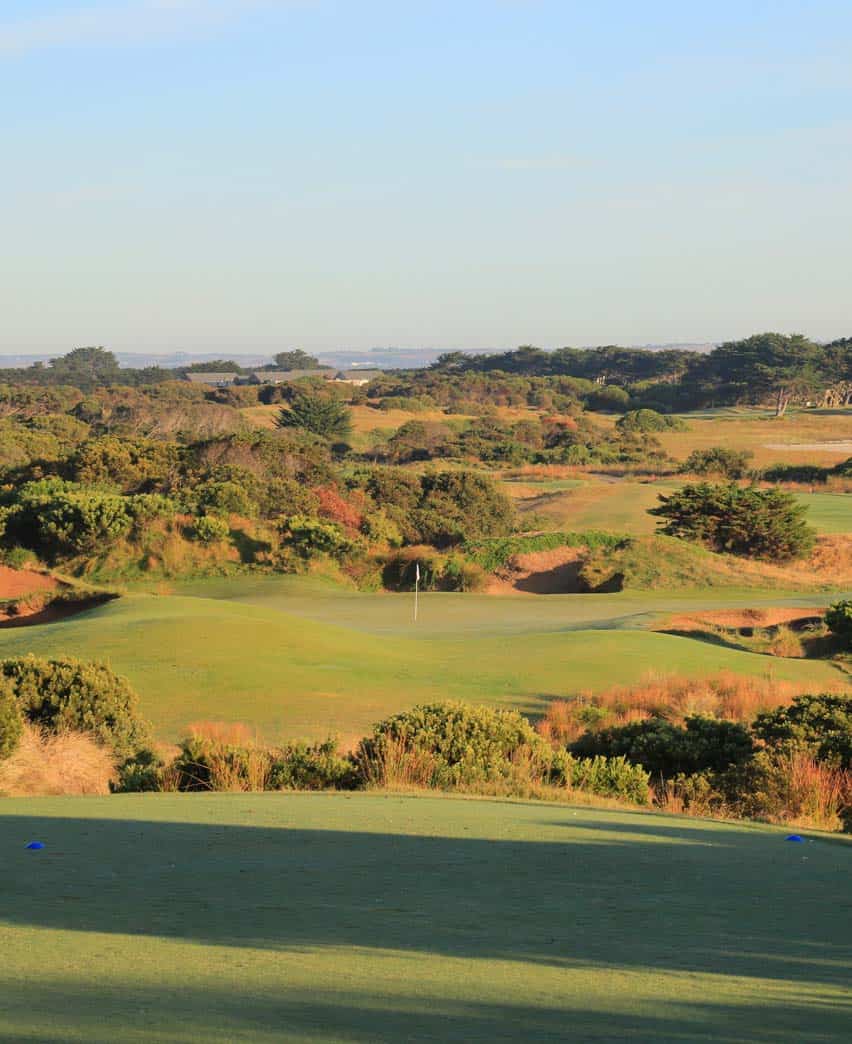Australia's Top 30 Golf Courses 2024/2025
Australia is home to some of the world's most stunning and challenging golf courses. From coastal links to meticulously maintained parkland courses, Australia country offers a diverse golfing experience. Here’s our ranked list of the top 30 golf courses in Australia based on research and personal experience.
1. Royal Melbourne Golf Course – West Course
The Royal Melbourne West Course stands as the undisputed crown jewel of Australian golf, consistently ranked as the country's finest golfing experience. Designed by the legendary Dr. Alister MacKenzie in 1926, this masterpiece perfectly captures the essence of strategic golf through its brilliant bunkering, subtle green complexes, and masterful routing across stunning sandbelt terrain. The course demands thoughtful shot selection rather than raw power, with each hole presenting multiple playing options that reward creativity and precision.
What truly elevates the West Course to legendary status is its immaculate conditioning and the way it harmonizes with the natural landscape. The firm, fast fairways and greens create a playing surface that challenges golfers to consider how their ball will react upon landing, adding layers of complexity to every shot. Having hosted numerous prestigious tournaments including the Presidents Cup, the West Course at Royal Melbourne continues to stand as a testament to timeless golf architecture that challenges and delights players of all skill levels.

2. Kingston Heath
Kingston Heath, located in Melbourne's sandbelt region, represents Australian golf architecture at its finest, consistently ranking among the world's elite courses. While not particularly long by modern standards at just over 6,800 yards, it masterfully employs strategic bunkering, narrow fairways, and lightning-fast greens to challenge even the most accomplished golfers. The course's brilliance lies in its subtlety—demanding precise shot placement and a thoughtful approach to scoring well.
The iconic par-3 15th hole exemplifies Kingston Heath's character, requiring an exacting mid-iron shot to a well-guarded green surrounded by deep bunkers. Dan Soutar's original design, enhanced by Dr. Alister MacKenzie's bunkering schemes, creates a harmonious golfing experience where every hole feels both distinct and part of a cohesive whole. The native vegetation framing each hole not only provides stunning aesthetics but also punishes wayward shots, making Kingston Heath a complete examination of a golfer's skill and mental fortitude.
3. Cape Wickham Links
Perched dramatically on the rugged northern coast of King Island, Cape Wickham Links has rapidly ascended to the upper echelon of world golf since its 2015 opening. Designed by Mike DeVries and Darius Oliver, this modern masterpiece features eight holes that run directly alongside the Bass Strait, offering some of the most spectacular ocean views in golf. The course's routing brilliantly incorporates the natural contours of the land, with the iconic Cape Wickham Lighthouse serving as a dramatic backdrop to several holes.
What sets Cape Wickham apart is its remarkable diversity of holes and playing experiences. The course seamlessly transitions between sheltered inland sections and exposed coastal stretches, with the final three holes providing an unforgettable climax as they wrap around Victoria Cove. The ever-present winds add another layer of challenge, ensuring that no two rounds are ever the same. Cape Wickham represents the pinnacle of modern links golf, where the natural environment dictates the playing experience rather than being manipulated to fit a predetermined design.
4. Barnbougle Dunes
Barnbougle Dunes, situated along Tasmania's remote northeastern coastline, transformed Australia's golfing landscape when it opened in 2004, proving that world-class golf could thrive in the most unexpected locations. Designed by Tom Doak and Mike Clayton, this pure links course embraces the rugged dunes and natural contours of its windswept setting. Wide fairways may appear generous at first glance, but strategic angles and cleverly placed hazards reward thoughtful play and precise shot-making.
The course's signature 7th hole, "Tom's Little Devil," exemplifies Barnbougle's charm—a short par-3 that plays deceptively difficult when the coastal winds howl across its exposed green. Throughout the layout, the natural dunes create amphitheater-like settings for many holes, while the firm, sandy turf provides the ideal playing surface for creative ground game options. Barnbougle Dunes sparked a renaissance in Australian golf tourism and demonstrated that authentic links golf could be created outside the traditional homes of the sport in Scotland and Ireland.
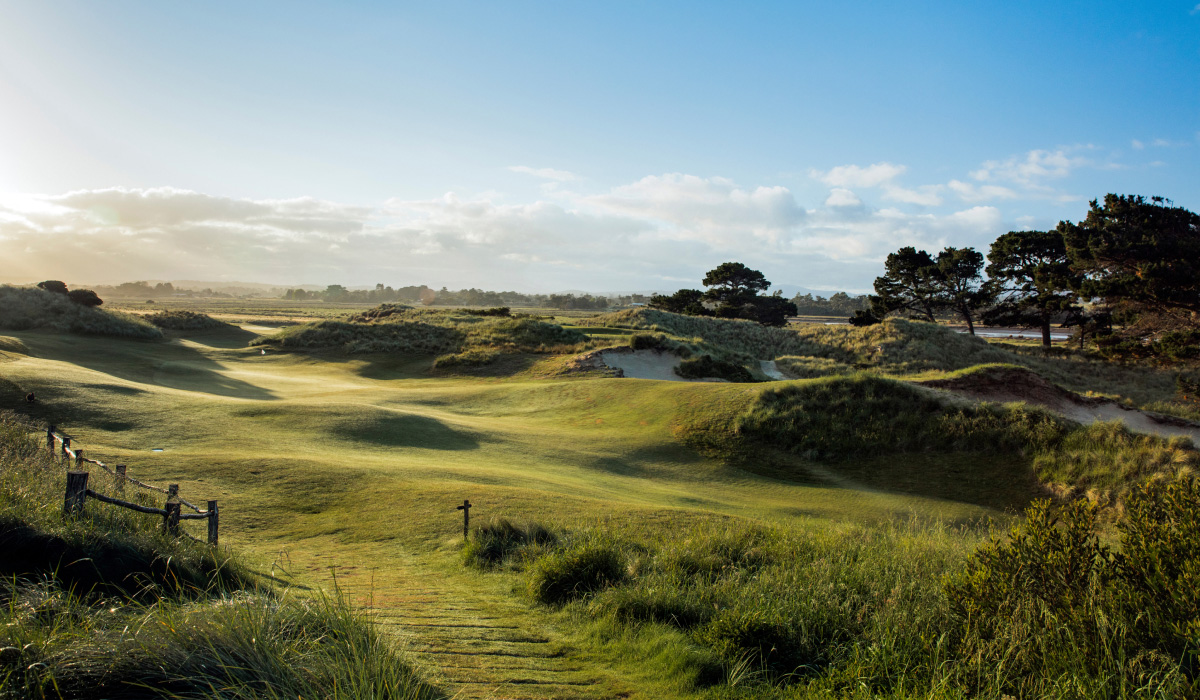
5. Barnbougle Lost Farm
Just across the river from its older sibling lies Barnbougle Lost Farm, a worthy companion that opened in 2010 to create one of the world's great golf destinations. Designed by Coore & Crenshaw, Lost Farm differs from the Dunes course with its more undulating landscape featuring larger dunes and a layout that includes 20 holes (with two additional par-3s). The course winds through spectacular dunes and along the coastline, offering breathtaking views and a diverse set of playing challenges that respond dramatically to changing wind conditions.
Lost Farm's green complexes are particularly noteworthy, featuring bold contours that create multiple distinct pin positions and playing strategies. The course's unique routing, which includes several holes that play directly along Anderson Bay, creates a sense of discovery as players move through different zones of the property. While maintaining the links ethos of its neighbour, Lost Farm has established its own distinct identity—more muscular in places yet equally thoughtful in its strategic elements—ensuring that visitors to Barnbougle experience two complementary but decidedly different golfing challenges.
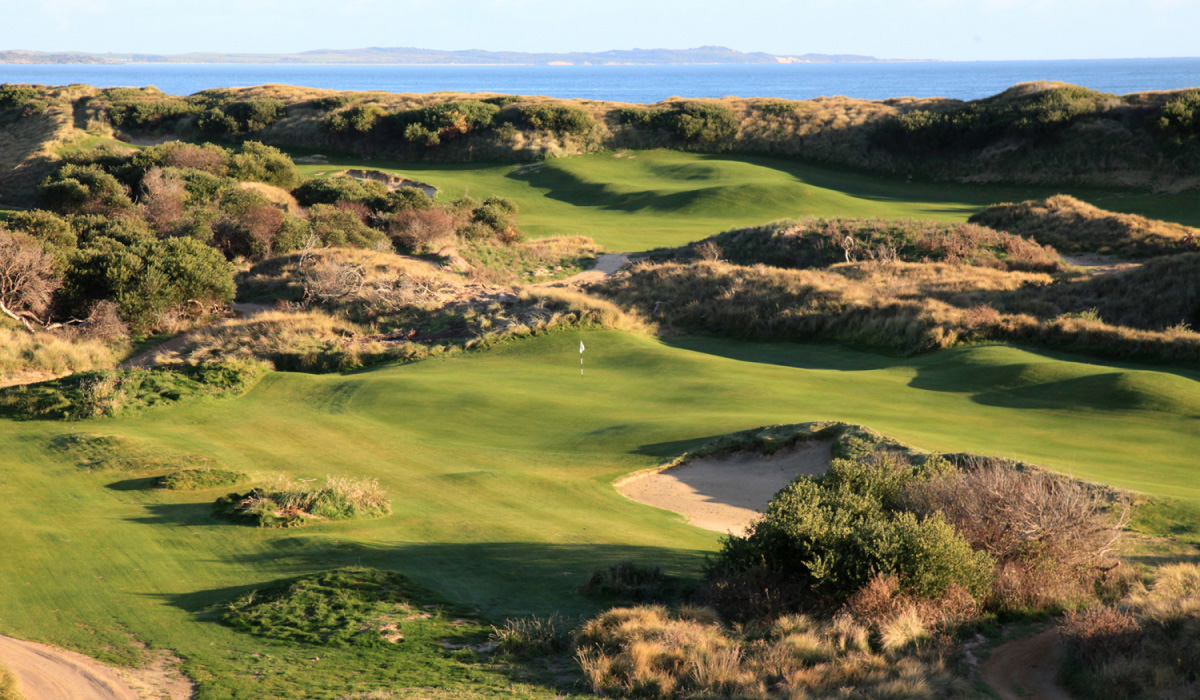
6. Peninsula Kingswood Golf Course – North Course
The North Course at Peninsula Kingswood represents one of Australia's most successful modern redesigns, emerging from an ambitious renovation by architects Ogilvy, Clayton, Cocking & Mead (OCCM) that transformed a good course into a great one. Reopened in 2019 after extensive work, the North Course now features dramatically improved strategic elements through clever bunkering, expanded short-grass areas, and undulating green complexes that reward creative shot-making. The sandbelt-style renovation embraced the property's natural sandy soil, creating firm playing conditions that encourage the ground game.
What distinguishes the North Course is its remarkable variety—from the spectacular short par-4 6th hole with its elevated green to the demanding par-5 17th that wraps around a large central bunker. The renovation introduced expansive waste areas planted with native vegetation that both enhance the visual drama and provide strategic challenges throughout the round. The course cleverly uses elevation changes to create interest, with several holes playing from elevated tees to showcase the strategic options available to players of all abilities.

7. New South Wales Golf Course
Perched dramatically on the cliffs of La Perouse overlooking Botany Bay, New South Wales Golf Course combines breathtaking beauty with championship-caliber challenge. Designed by Dr. Alister MacKenzie in 1928, the course features an unforgettable routing that takes full advantage of its spectacular seaside setting. The iconic par-3 6th hole, playing across an ocean inlet to a green surrounded by bunkers, ranks among Australia's most photographed golf holes and epitomizes the thrilling risk-reward decisions found throughout the course.
While the ocean views command attention, the architectural brilliance of New South Wales lies in its strategic depth and variety. The course presents a complete examination of golfing skills, from demanding tee shots that must navigate the ever-present coastal winds to approach shots requiring precise distance control into cleverly contoured greens. The back nine moves inland but maintains interest through excellent use of the rolling terrain and strategic bunkering. Few courses in the world match New South Wales for its combination of natural beauty, championship pedigree, and memorable holes that remain etched in players' memories long after their round.
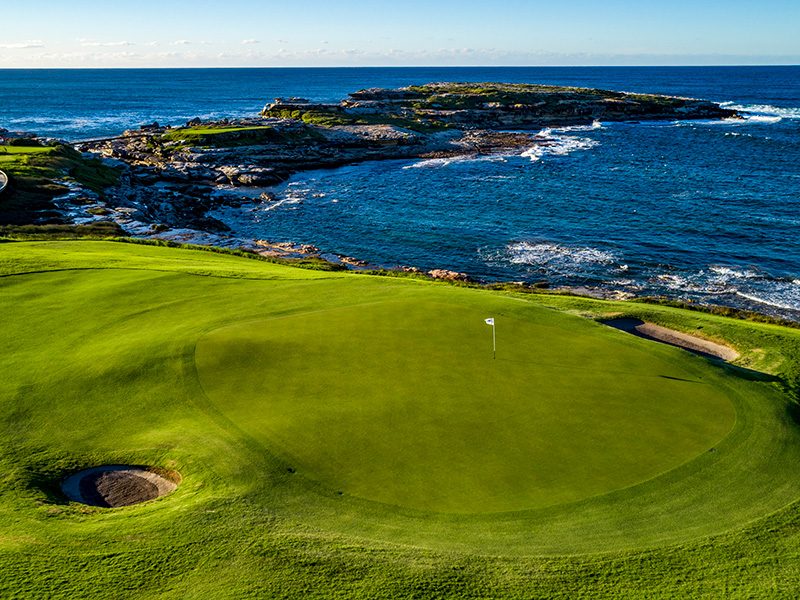
8. Royal Melbourne Golf Course – East Course
The East Course at Royal Melbourne, while often overshadowed by its more famous West Course neighbor, stands as a magnificent golfing experience in its own right. Designed by Alex Russell, an Australian architect who worked closely with Dr. Alister MacKenzie, the East Course opened in 1932 and captures many of the same design principles that make the West Course special. The layout features spectacular bunkering, subtly contoured greens, and strategic options that reward thoughtful play rather than mere power.
What distinguishes the East Course is its routing through slightly more undulating terrain, creating a greater variety of elevation changes and stance challenges throughout the round. When the famous Composite Course is assembled for major tournaments, several holes from the East Course are selected, testifying to their quality and challenge. The par-3 4th hole exemplifies the East's character—playing to an elevated green surrounded by deep bunkers, it demands precision and nerve. While it may lack some of the West Course's grandeur, the East Course completes one of golf's greatest 36-hole experiences and would be the crown jewel at almost any other facility.

9. Victoria Golf Course
Victoria Golf Club, another gem in Melbourne's famed Sandbelt region, stands as a timeless testament to strategic golf design. Originally crafted by Oscar Damman and Bill Meader, with later refinements by Dr. Alister MacKenzie, the course presents a masterclass in the use of subtle contours and strategic bunkering to create challenging yet fair golf holes. Victoria's fairways are typically generous, but precise positioning is crucial to approach the well-guarded, often elevated greens from the optimal angle.
The course is distinguished by its exceptional conditioning, with firm, fast playing surfaces that bring its strategic elements to life. Victoria's collection of par-3s ranks among Australia's finest, with each presenting a unique challenge requiring different clubs and trajectories. Having hosted numerous Australian Opens and other prestigious tournaments, Victoria has challenged the world's best players while remaining enjoyable for golfers of all abilities. The course's classic sandbelt characteristics—bold bunkering, strategic width, and sophisticated green complexes—ensure its continued place among Australia's elite golfing venues.

10. Royal Adelaide Golf Course
Royal Adelaide Golf Course stands as a testament to timeless golf architecture, blending the natural beauty of its sandbelt location with strategic design principles that have challenged and delighted golfers since 1926. The course's most distinctive feature is the railway line that cuts through the property, creating a unique hazard and visual landmark that comes into play on several holes. Dr. Alister MacKenzie's influence can be seen throughout the layout, particularly in the bunkering and green complexes that reward creative shot-making and strategic thinking.
The par-4 3rd hole exemplifies Royal Adelaide's character—a seemingly straightforward hole that reveals its complexity through a deceptively contoured fairway and a green that falls away on multiple sides. Throughout the course, the firm, fast conditions and ever-present winds from nearby Gulf St. Vincent add layers of challenge that ensure no two rounds are ever the same. With its subtle strategic elements, brilliant use of natural contours, and perfect integration with the surrounding landscape, Royal Adelaide continues to represent the pinnacle of Australian golf design.
11. The National Golf Course – Gunnamatta Course
The Gunnamatta Course at The National, redesigned by Tom Doak in 2019, has rapidly established itself as one of Australia's most exciting and challenging layouts. Replacing the former Ocean Course, Doak's design takes full advantage of the dramatic coastal dunes and expansive ocean views of Victoria's Mornington Peninsula. The course features wide fairways that accommodate the often fierce coastal winds, but strategic bunkering and undulating green complexes ensure that precision and thoughtful play are rewarded over raw power.
What sets Gunnamatta apart is its seamless integration with the natural landscape and the variety of shots it demands. Several holes offer breathtaking vistas across Bass Strait, while others wind through protected valleys between dunes. The par-3 16th hole stands as the course's signature, playing across a natural chasm to a green set against the backdrop of the ocean. Doak's minimalist approach to design allows the natural contours of the land to dictate play, creating a course that feels as though it has always belonged on this spectacular piece of coastline.
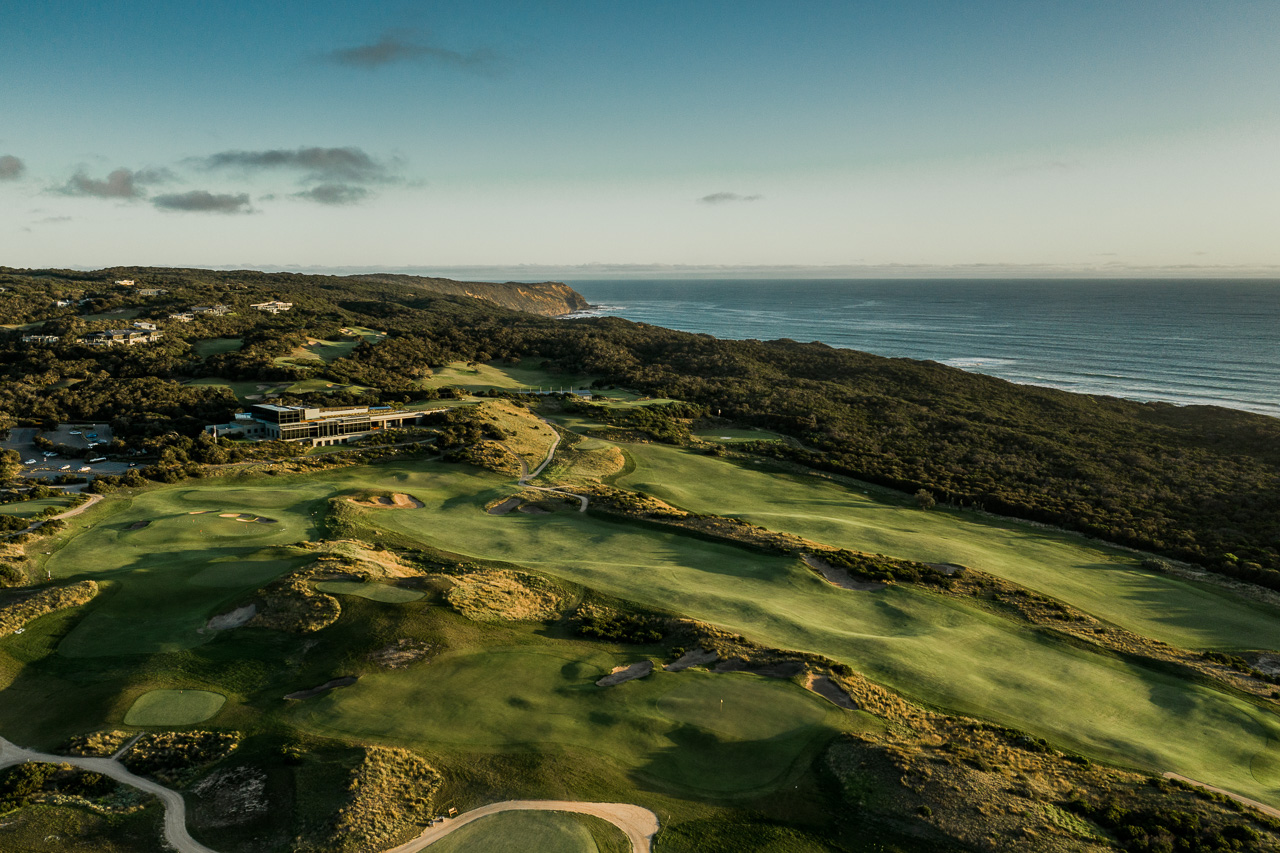
12. The National Golf Course – Moonah Course
The Moonah Course at The National, designed by Greg Norman and opened in 2000, represents Australian links golf at its most challenging and authentic. Set further inland than its coastal siblings at The National, Moonah's character derives from its rugged dunes, native grasses, and firm playing surfaces that create a genuine links-like experience. Norman's design brilliantly incorporates the natural contours of the land, with holes that flow organically through valleys and around dunes, demanding creative shot-making and strategic thinking.
What distinguishes Moonah is its remarkable variety and the way each hole feels isolated from the others, creating a sense of solitude and connection with the natural environment. The bunkering is particularly noteworthy—deep, rugged hazards that both define playing strategies and enhance the course's visual drama. While less overtly spectacular than some of Australia's coastal courses, Moonah's subtle brilliance reveals itself through thoughtful design elements that create multiple playing options on every hole. The ever-present wind adds another layer of challenge, ensuring that players must constantly adapt their strategy and shot selection throughout the round.
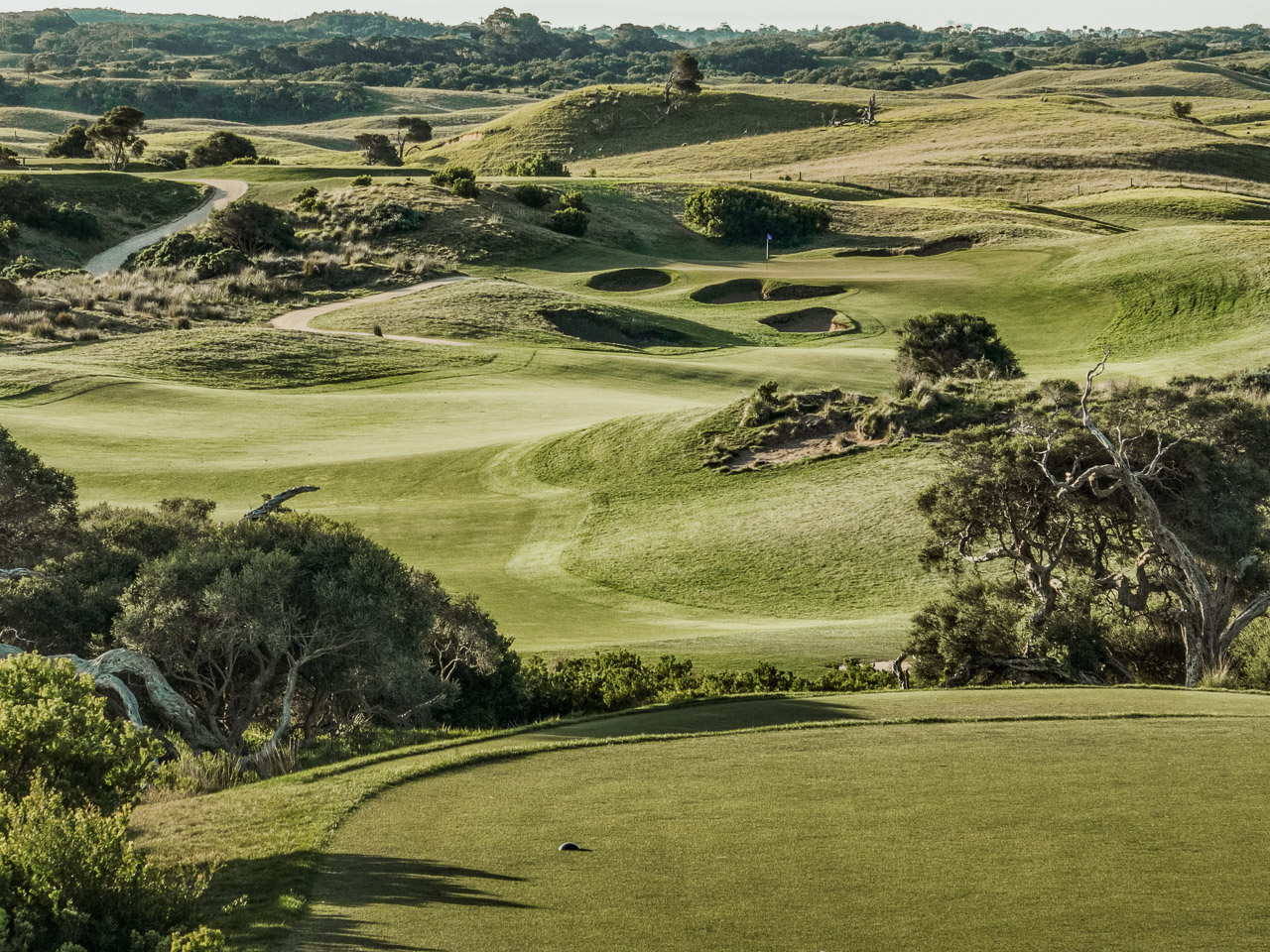
13. Metropolitan Golf Course
Metropolitan Golf Club exemplifies the classic Melbourne Sandbelt style with its firm, fast playing conditions, strategic bunkering, and sophisticated green complexes. Known for having some of the finest putting surfaces in Australia, Metropolitan demands precision and touch around the greens, where closely mown surrounds and subtle contours create multiple short game options. The course's trademark bunkers—deep, flashed-sand hazards with grassy faces—not only provide visual definition but significantly influence playing strategy on every hole.
What distinguishes Metropolitan is its immaculate conditioning and the way it rewards thoughtful, precise golf rather than power. Tree-lined fairways create clearly defined playing corridors, while the placement of hazards consistently asks players to make risk-reward decisions throughout their round. Having hosted numerous prestigious tournaments including the Australian Open and World Cup of Golf, Metropolitan has challenged the world's best players while remaining playable and enjoyable for golfers of all abilities. The par-4 finishing hole, playing to a green nestled beside the elegant clubhouse, provides a fitting conclusion to a course that embodies the sophisticated charm of Melbourne's Sandbelt.

14. Ocean Dunes
Ocean Dunes, situated on the western coast of King Island, offers a thrilling links experience that captures the raw, untamed essence of traditional golf. Designed by Graeme Grant and opened in 2016, the course hugs the rugged coastline with eight holes playing directly alongside the Southern Ocean. The opening stretch of holes immediately announces the course's dramatic character, with the par-3 4th hole requiring a heroic carry across an ocean inlet to a green perched on a rocky outcrop—one of the most spectacular and intimidating tee shots in Australian golf.
What elevates Ocean Dunes beyond mere scenic beauty is its strategic depth and variety. The course transitions seamlessly between coastal holes exposed to the elements and more sheltered inland sections where clever design features maintain interest and challenge. The constantly changing winds ensure that players must adapt their strategy throughout the round, with ground game options often providing the smartest approach to the firm, undulating greens. Along with Cape Wickham on the island's northern tip, Ocean Dunes has transformed King Island into an essential destination for golf purists seeking authentic links experiences in dramatic settings.

15. Peninsula Kingswood Golf Course – South Course
The South Course at Peninsula Kingswood underwent a comprehensive renovation alongside its North Course sibling, emerging as a distinct yet equally impressive golfing experience. Redesigned by the team at OCCM, the South Course features more dramatic elevation changes than the North, creating spectacular vistas and playing scenarios. The renovation enhanced the course's strategic elements through expanded short grass areas, repositioned bunkers, and green complexes that reward creative approach and recovery shots.
What makes the South Course special is its remarkable variety and the way it uses the property's natural features to create memorable holes. The short par-4 15th exemplifies this approach—a drivable risk-reward hole with a cleverly contoured green surrounded by challenging recovery areas. Throughout the course, the architects have created width and strategic options while maintaining a demanding challenge for accomplished players. The renovation successfully transformed the South Course from the lesser of Peninsula Kingswood's two courses into an equal partner in one of Australia's finest 36-hole facilities, with each course offering a distinct yet complementary playing experience.

16. St Andrews Beach
St Andrews Beach, designed by Tom Doak and opened in 2005, represents minimalist architecture at its finest, with a layout that flows naturally through the rolling dunes of the Mornington Peninsula. Unlike many of its neighbors, St Andrews Beach sits slightly inland without ocean views, yet creates a pure links experience through its firm playing surfaces, strategic bunkering, and exposure to the elements. The course's routing is particularly noteworthy, with holes running in all directions to ensure players must constantly reassess wind conditions and adjust strategy accordingly.
What distinguishes St Andrews Beach is its sophisticated simplicity—wide fairways provide multiple playing angles, while cleverly contoured greens demand precise approach shots from the correct position. The par-3 holes form an exceptional collection, ranging from the short but treacherous 7th to the long, demanding 16th. Throughout the course, Doak's light-touch approach allows the natural features of the land to dictate play, creating a layout that feels as though it was discovered rather than constructed. For golf purists who value strategic options, ground game possibilities, and natural beauty over manufactured hazards, St Andrews Beach represents Australian golf architecture at its most authentic.
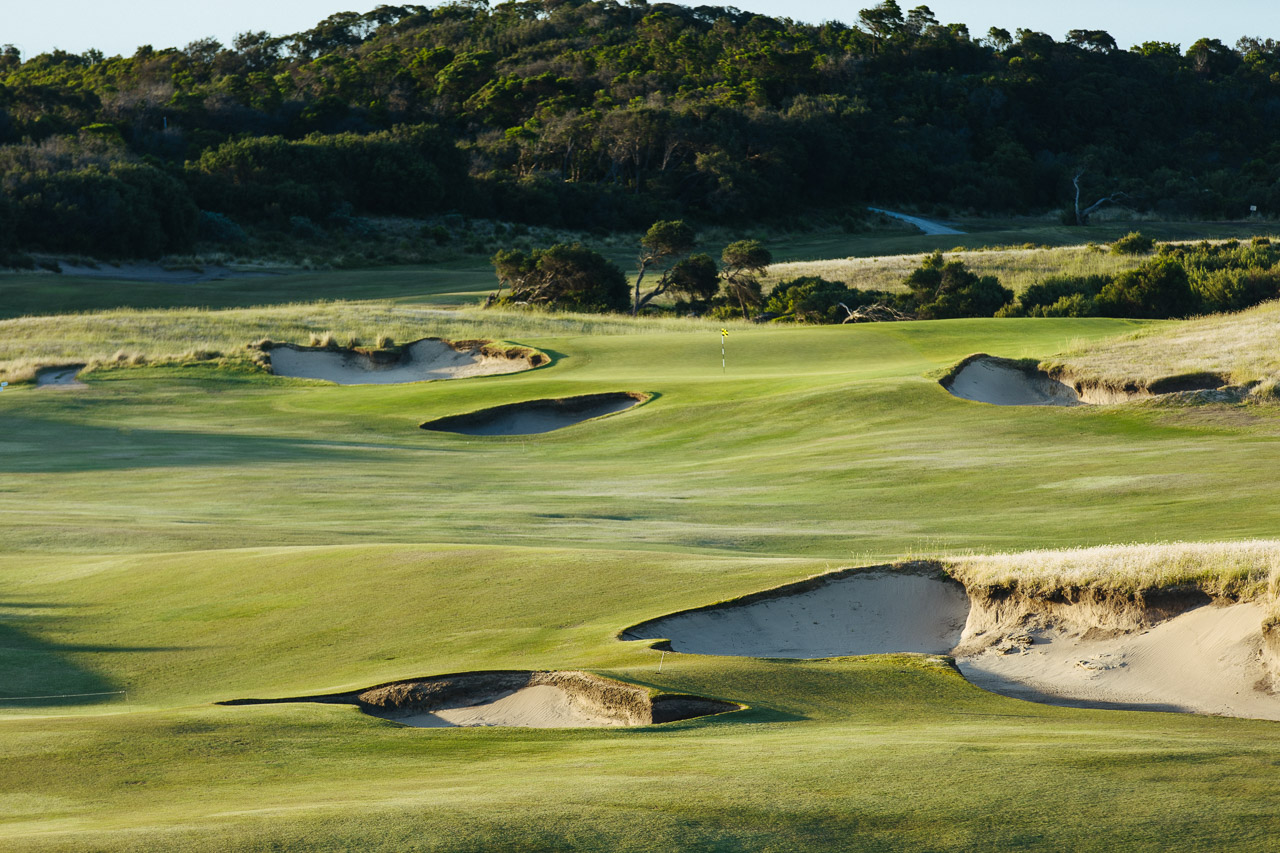
17. The Lakes Golf Course
The Lakes Golf Course, situated just minutes from Sydney's central business district, offers a distinctive championship experience centered around its signature water hazards and strategic bunkering. Following a comprehensive redesign by Mike Clayton and associates completed in 2009, the course masterfully incorporates its natural wetland setting, with water coming into play on more than half the holes. The par-5 14th stands as one of Australia's most dramatic holes, featuring a spectacular tee shot over water to a fairway that wraps around a large lake, presenting risk-reward decisions that have determined the outcome of many tournaments.
Beyond its water features, The Lakes excels through the variety and character of its holes—from the dune-flanked opening stretch to the more traditional tree-lined holes of the back nine. The firm, fast playing conditions and cleverly contoured greens add layers of strategic complexity that reward thoughtful play. Having hosted the Australian Open and numerous other prestigious tournaments, The Lakes combines championship pedigree with playability for everyday golfers, all within a stunning natural setting where native wildlife abounds and the Sydney skyline provides a dramatic backdrop to many holes.

18. Lake Karrinyup Golf Course
Lake Karrinyup stands as Western Australia's premier golfing experience, a classic parkland design set in a natural bushland setting just minutes from Perth's city center. Originally designed by Alex Russell in 1928 and later refined by Mike Clayton, the course features magnificent towering eucalyptus trees that frame fairways, a large central lake that comes into play on several holes, and strategic bunkering that demands thoughtful shot selection. The rolling terrain creates natural amphitheaters throughout the property, with the signature par-3 8th hole playing across the lake to a well-guarded green.
What distinguishes Lake Karrinyup is its remarkable variety of holes and the way it rewards strategic play over power. The short par-4 13th offers a risk-reward opportunity for long hitters while penalizing poorly executed aggressive plays, epitomizing the strategic choices found throughout the round. Having hosted numerous professional tournaments including the Perth International and World Super 6, Lake Karrinyup challenges the world's best players while remaining playable for golfers of all abilities. The course's classic design principles, natural beauty, and championship pedigree ensure its continued place among Australia's finest golfing experiences.

19. Cathedral Lodge
Cathedral Lodge, the vision of Australian businessman and golf enthusiast David Evans, emerged in 2018 as one of Australia's most exclusive and spectacular modern golf experiences. Designed by Greg Norman and set in a dramatic valley alongside the Goulburn River in Victoria, the course features stunning elevation changes, natural rock outcroppings, and strategic design elements that challenge players of all abilities. The routing brilliantly incorporates the property's natural features, with holes that play along ridgelines, through valleys, and alongside the river.
What sets Cathedral Lodge apart is its commitment to providing a pure golf experience free from distractions. The exclusive private club limits play to members and their guests, ensuring uncrowded conditions and immaculate course maintenance. The par-3 holes form an exceptional collection, highlighted by the breathtaking 9th that plays across a ravine to a green flanked by bunkers and natural rock formations. With its stunning natural setting, thoughtful design, and exclusive atmosphere, Cathedral Lodge represents a new pinnacle in Australian golf—a modern classic that combines championship challenge with natural beauty in perfect harmony.
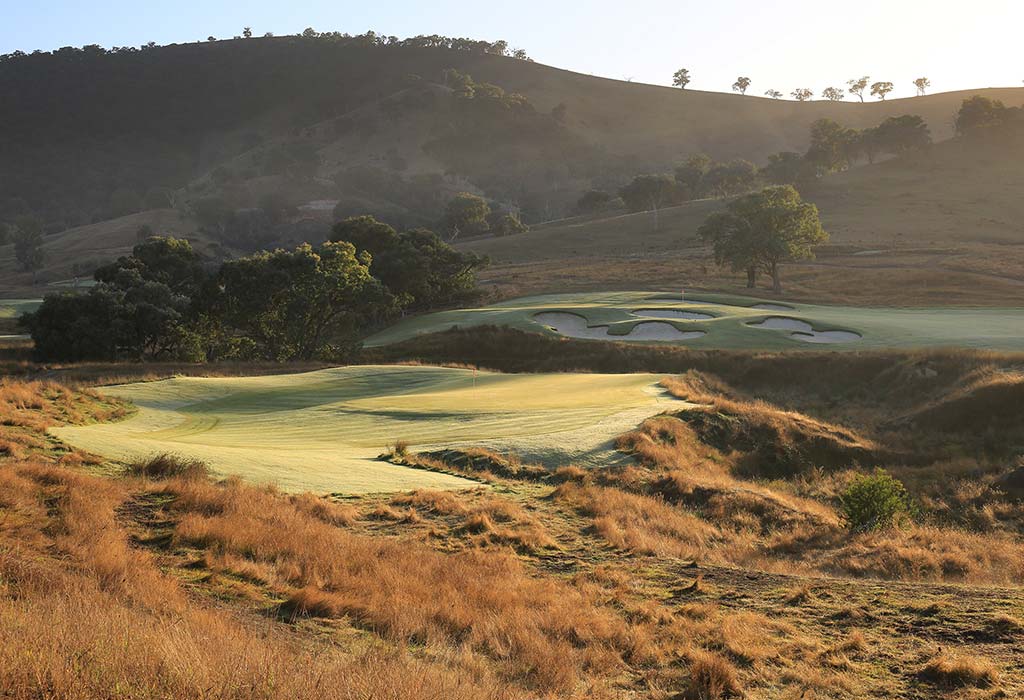
20. The National Golf Course – Old Course
The Old Course at The National, designed by Robert Trent Jones Jr. and opened in 1988, represents the beginning of the transformation of the Mornington Peninsula into one of Australia's premier golf destinations. Set on dramatic terrain with spectacular ocean views, the Old Course blends traditional design principles with modern sensibilities. Strategic bunkering and cleverly contoured greens create multiple playing options throughout the round, with the prevailing winds adding another layer of challenge and complexity.
What distinguishes the Old Course is its dramatic setting and the way it uses elevation changes to create memorable golf holes. Several tees and greens sit on ridgelines offering breathtaking vistas across Bass Strait, while others play through protected valleys between dunes. The par-3 7th hole exemplifies this drama—playing from an elevated tee to a green surrounded by bunkers, with the ocean providing a stunning backdrop. While the newer courses at The National may receive more attention, the Old Course continues to offer a challenging and visually spectacular golfing experience that showcases the natural beauty of its coastal setting.
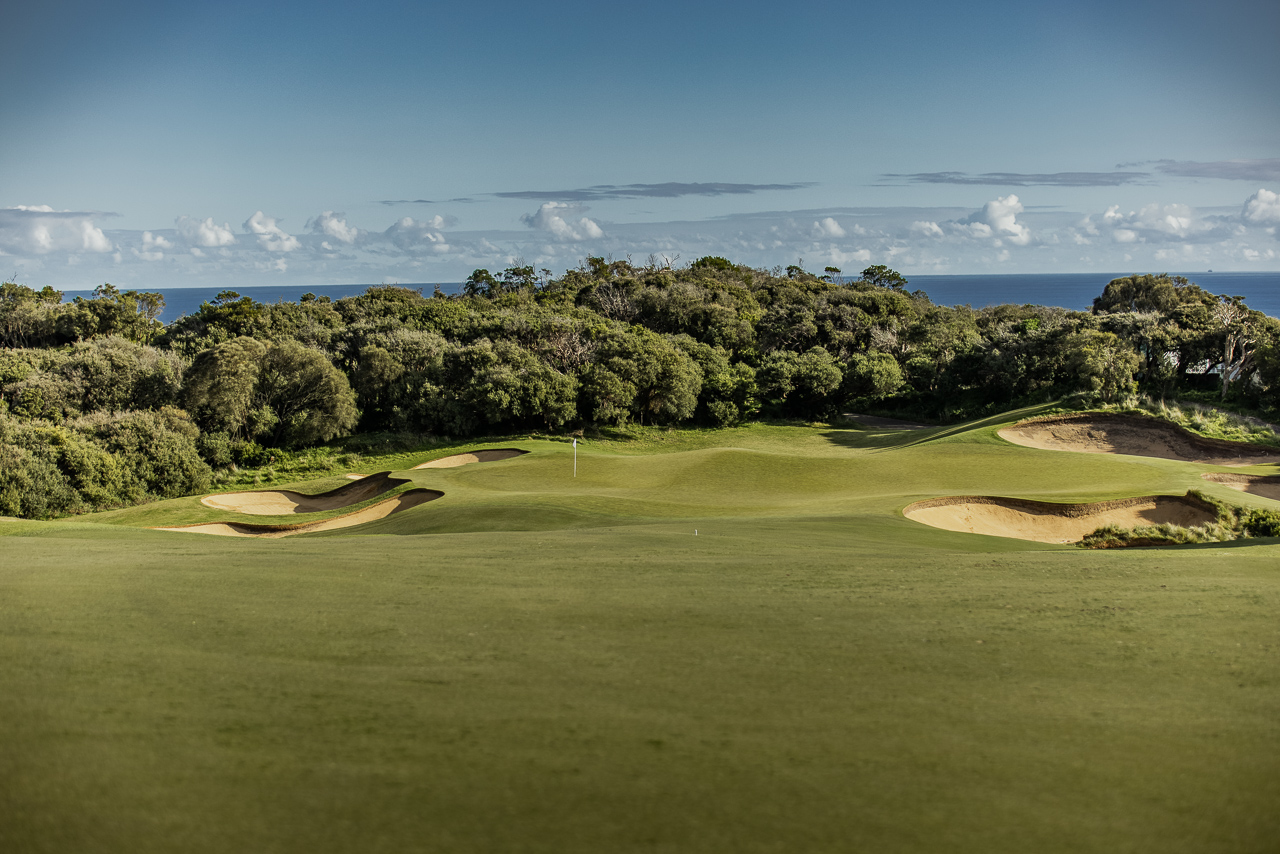
21. Kooyonga Golf Course
Kooyonga Golf Club represents the pinnacle of traditional parkland golf in South Australia, with a timeless design that has challenged and delighted players since 1923. Designed by H.L. Rymill, the course features undulating fairways lined by mature pine and eucalyptus trees, strategic bunkering, and subtly contoured greens that reward precision and thoughtful play. The routing brilliantly uses the natural sandbelt terrain to create a diverse set of holes that demand variety in shot-making and strategy.
What distinguishes Kooyonga is its remarkable conditioning and the way it rewards strategic thinking over power. The course's collection of par-4s is particularly strong, ranging from short, potentially drivable holes to long, demanding two-shotters that have tested the world's best players during multiple Australian Opens and other prestigious tournaments. The short par-4 3rd exemplifies Kooyonga's strategic brilliance—a deceptively challenging hole where position off the tee is crucial to approach a green protected by deep bunkers. With its classic design principles, championship pedigree, and immaculate presentation, Kooyonga continues to represent the finest traditions of Australian golf.
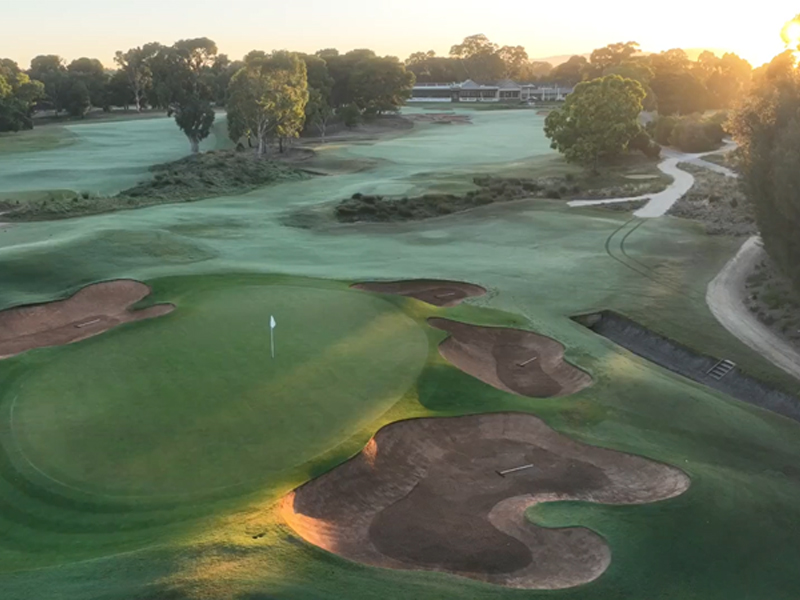
22. Yarra Yarra Golf Course
Yarra Yarra Golf Club stands as one of Melbourne Sandbelt's classic treasures, featuring a design primarily attributed to Alex Russell with influences from the great Dr. Alister MacKenzie. The course is renowned for having one of the world's finest collections of par-3 holes, each offering a distinct challenge and visual appeal. The 11th hole particularly exemplifies this excellence—a mid-length one-shotter to an elevated green surrounded by deep, flashed-sand bunkers that has tested the nerves and skill of countless championship contenders.
Following a restoration by Renaissance Golf Design that began in 2018, Yarra Yarra has recaptured much of its original character through expanded fairways, restored bunker shapes, and reclaimed pin positions on the expansive greens. Throughout the course, the strategic bunkering and subtle green contours reward thoughtful play and precise shot-making rather than mere power. The clubhouse, a magnificent Mediterranean-style building, provides a fitting backdrop to the closing holes and completes one of Australia's most traditional and respected golf experiences—a course that honors the golden age of architecture while remaining relevant to the modern game.

23. Woodlands Golf Course
Woodlands Golf Club exemplifies the classic Melbourne Sandbelt style with its strategic bunkering, subtly contoured greens, and natural integration with the surrounding landscape. Originally designed by Sam Berriman in 1919, the course features tree-lined fairways that create clearly defined playing corridors while allowing for strategic width and multiple approach options. Recent restoration work has emphasized the course's original design principles, with expanded short-grass areas around greens creating more interesting recovery options and bringing the sophisticated green contours more prominently into play.
What distinguishes Woodlands is its remarkable consistency and the way it rewards strategic thinking throughout the round. The par-3 holes form an exceptional collection, with the 17th standing as one of the Sandbelt's most challenging short holes—requiring a precise mid-to-long iron to a narrow, well-protected green. The course's back nine is particularly noteworthy, with the closing stretch of holes providing a demanding finish that has decided many championships. Woodlands may lack the fame of some of its Sandbelt neighbors, but its architectural sophistication, immaculate conditioning, and strategic depth ensure its continued recognition as one of Australia's finest golfing experiences.

24. Barwon Heads Golf Course
Barwon Heads Golf Club offers one of Australia's most authentic links experiences, set on sandy terrain at the mouth of the Barwon River on Victoria's Bellarine Peninsula. Established in 1907 and refined by Victor East in the 1920s, the course features firm, undulating fairways, natural bunkering, and greens that seamlessly blend with their surroundings. The ever-present coastal winds add another dimension to the challenge, ensuring that players must adapt their strategy and shot selection throughout the round.
What makes Barwon Heads special is its timeless quality and the way it captures the essence of traditional golf. The short par-4 13th exemplifies this charm—a potentially drivable hole where the small, cleverly contoured green punishes overly aggressive plays. The closing stretch of holes, playing along and around the iconic clubhouse (a heritage-listed building that features prominently in the Australian golf novel "The Dunes"), creates a memorable conclusion to a round that feels connected to golf's earliest traditions. While lacking the dramatic dunes of some modern Australian links, Barwon Heads compensates with subtle strategic elements and a natural beauty that has captivated golfers for over a century.

25. The Dunes Links
The Dunes Golf Links on Victoria's Mornington Peninsula represents one of Australia's most successful modern links designs, masterfully crafted by Tony Cashmore to capture the essence of traditional links golf. Opened in 1997, the course features rolling fairways set among natural sand dunes, strategic bunkering, and firm playing surfaces that encourage the ground game so essential to authentic links play. The routing brilliantly utilizes the natural contours of the land, with holes flowing seamlessly through valleys between dunes and occasionally rising to elevated positions that provide spectacular views across the property.
What distinguishes The Dunes is its remarkable variety and the way it rewards creative shot-making. The par-3 9th hole exemplifies this challenge—a mid-length one-shotter to a green set in a natural amphitheater, where the prevailing winds and cleverly placed bunkers demand precision and commitment. Throughout the course, wide fairways provide strategic options off the tee, while the approach shots into subtly contoured greens require careful consideration of pin position and wind conditions. With its walking-friendly atmosphere, minimalist design philosophy, and commitment to traditional golfing values, The Dunes continues to represent the finest qualities of links golf in a distinctly Australian setting.

26. The Australian
The Australian Golf Club holds the distinction of being the nation's oldest golf club, established in 1882, though its current championship course reflects the vision of Jack Nicklaus, who redesigned the layout in 1977 and refined it further in 2013. The course features distinctive bunkering, strategically placed water hazards, and expertly contoured greens that demand precision and thoughtful play. Its signature 1st and 18th holes, sharing a massive double green adjacent to the clubhouse, create a spectacular arena that has witnessed countless dramatic moments in Australian tournament history.
As the spiritual home of the Australian Open, having hosted the championship more times than any other venue, The Australian combines championship pedigree with playability for members and guests. The par-3 holes form an exceptional collection, with the 15th standing as one of Sydney's most challenging short holes—playing over water to a well-guarded green where swirling winds complicate club selection. Following Nicklaus's 2013 refinements, which introduced more short grass areas around greens and strategic options throughout the course, The Australian continues to evolve while maintaining its position as one of the country's most respected and historically significant golfing venues.

27. Newcastle Golf Course
Newcastle Golf Club offers a unique fusion of links and parkland golf set among spectacular coastal dunes just two hours north of Sydney. Originally designed by Carnegie Clark in 1915 with later modifications by Dr. Alister MacKenzie, the course features dramatic elevation changes, strategic bunkering, and challenging green complexes. The routing brilliantly incorporates the natural dune landscape, with holes that wind through valleys, play along ridges, and occasionally rise to elevated positions that provide breathtaking views across the property and to the Pacific Ocean beyond.
What distinguishes Newcastle is its remarkable variety and the way each hole feels distinct yet part of a cohesive whole. The par-4 5th hole exemplifies the course's character—playing from an elevated tee through a valley flanked by dunes to a green set against a backdrop of native vegetation. Throughout the round, players encounter a diverse set of challenges, from short, potentially drivable par-4s to demanding long two-shotters and par-3s ranging from delicate short irons to testing long irons or woods. With its unique setting, strategic design elements, and the ever-present coastal winds adding another layer of challenge, Newcastle provides a memorable golfing experience that captures the natural beauty of the New South Wales coastline.

28. Royal Queensland Golf Course
Royal Queensland Golf Club, redesigned by Mike Clayton and associates following the construction of the Gateway Bridge, represents one of Australia's most successful modern renovations of a classic layout. The redesign embraced traditional design principles while creating a course suited to contemporary play, featuring wide fairways, strategic bunkering, and sophisticated green complexes. The course's relatively flat terrain is transformed through subtle mounding and clever hazard placement that creates multiple playing strategies on every hole.
What distinguishes Royal Queensland is its strategic depth and the way it rewards thoughtful play over power. The bunkering is particularly noteworthy—hazards positioned to influence decision-making from the tee and approach shots that demand careful consideration of pin position and wind conditions. The par-3 holes form an exceptional collection, with the 17th exemplifying the course's challenge—a mid-length one-shotter to a green well-protected by bunkers and subtle contours. Having hosted numerous Australian championships and cultivated many of the country's finest players, Royal Queensland combines historical significance with modern design principles to create a challenging yet enjoyable test of golf in the sunshine state's capital.
29. Lonsdale Links
Lonsdale Links, completely redesigned by OCM Golf and reopened in 2021, represents one of Australia's most exciting modern courses, transforming the former Lonsdale Golf Club into a genuine links-inspired experience. Set on sandy terrain near the entrance to Port Phillip Bay, the redesign embraced the property's natural characteristics to create firm playing surfaces, strategic bunkering, and green complexes that encourage creative shot-making. The course's routing brilliantly incorporates the site's subtle elevation changes, with holes that flow naturally through the landscape rather than being forced upon it.
What makes Lonsdale Links special is its commitment to traditional golfing values—walkability, strategic options, and ground game possibilities—while creating a thoroughly modern playing experience. The short par-4 9th exemplifies this approach—a potentially drivable hole where aggressive plays must challenge deep bunkers, while the safer route creates a more demanding approach to a cleverly contoured green. Throughout the course, wide fairways provide multiple playing angles, firm conditions allow for creative approaches, and the ever-present coastal winds add another layer of challenge. Lonsdale Links represents the exciting future of Australian golf design, where traditional principles meet contemporary execution.

30. Thirteenth Beach Golf Course – Beach Course
The Beach Course at Thirteenth Beach, designed by Tony Cashmore and opened in 2001, represents the first stage in the development of one of Australia's finest 36-hole facilities on Victoria's Bellarine Peninsula. The course features a classic out-and-back routing reminiscent of traditional links layouts, with the front nine playing through more open terrain while the back nine winds through coastal tea-tree vegetation. Throughout the design, wide fairways provide strategic options from the tee, while cleverly contoured greens and thoughtful bunkering reward precise approach play.
What distinguishes the Beach Course is its brilliant incorporation of the natural landscape and the way it rewards creative shot-making. The signature 16th hole, a short par-3 playing to a green seamlessly integrated into a natural dune, exemplifies this harmony between design and environment. The closing stretch of holes provides a demanding finish, with the par-5 18th offering risk-reward options that have decided many tournaments. With its firm playing surfaces, strategic depth, and natural beauty, the Beach Course at Thirteenth Beach continues to represent the finest qualities of modern Australian golf design—challenging for accomplished players while remaining playable and enjoyable for golfers of all abilities.
